Stephen J. Phillips
MIT Press

We seem currently (yet again) to be in a particular moment of realization regarding environmental determination, conditioning, and the myriad ways in which the physical structures and nonphysical actants in our surroundings might not only affect us, but effect us. A reprised interest in the theorization of apparatuses, models of technical and ecological interaction, and a philosophical acknowledgment of the agency of materials and objects in cultural and natural systems all attest to this belated or renewed concern. For whatever reasons, we feel newly opened, exposed, porous; more immersed in—and penetrated by—systems not entirely perceptible, and even less controllable than ever before. Yet these suspicions nothing new; they have a distinct history. Indeed, they have an art history. A new wave of scholarship is beginning to account for this history by analyzing not only art and architecture history’s traditional objects, but the contingent patterns and virtual forms produced by myriad other disciplines. Stephen J. Phillips’s monograph on the elusive modernist Frederick Kiesler is an important component of this wave.
Everyone acquainted even vaguely with the history of modernist art and design knows of Kiesler. He seemed to be everywhere at several key moments—engaged with the De Stijl group in the 1920s; mixing with the Surrealists in Paris in the 1930s and instrumental in their reunions in New York in the 1940s; serving as a kind of éminence grise during the postwar reassessment of radical design by the Museum of Modern Art post-WWII. But what, exactly, was he doing during these moments? He didn’t leave a substantial body of objects that might be analyzed, nor a cohesive set of statements that might be read as a unified theory. From the perspective of architecture history, his work is often seen as a form of expressionism, or what has come to be dubiously known as “architecture sculpture.” Art historians remember one or two exhibition designs.
This is what makes Phillips’s study so remarkable: it both breaks down an incredibly complex and variegated lifetime of work into legible categories, and builds up a narrative that can be grasped in its historical and conceptual outlines. It demonstrates the ways in which Kiesler’s work responded to its context (to use an abused and reductive historical category), but also the ways in which it established new contextual horizons for what architecture and design could be under industrial and postindustrial capitalism. For Kiesler wanted to restructure the entirety of the environment. As it happened, he began with architecture, moved to stage set and theater design, exhibition design, laboratory studies of human ergonomics, prototype housing, and, eventually, visionary urban propositions. Much of this work was carried out simultaneously; so, instead of attempting a chronology, Phillips organizes his study by building/activity type. Of course, the insularity of these categories breaks down frequently, which is one of the principle pleasures of the book.
In every chapter, we learn of Kiesler’s mystico-scientific approach to life and the types of structures he wished to insert therein. We learn that he conceived of theatrical sets as complex multimedia apparatuses that were meant to engage the eye and mind of the audience in spectacular ways; that storefronts could manipulate the auratic properties of buildings and commodities; that exhibition spaces could become mythical sites of transcendence and primitivist regression; that new technologies could offer evermore optimized and efficient affordances to the most mundane human activities (like reaching for a book). And finally, we learn that all of this might play out in a new kind of habitable space that would fold into itself topologically, accommodate the subject in womblike comfort, and ceaselessly alter its physical and ambient properties to better respond to the conscious and unconscious needs of its users. This is where the book culminates in Chapter 5—in a beautifully incantatory invocation of the tectonic and spiritual properties of the so-called Endless House, which Kiesler worked on in many different iterations, the most famous of which was modeled for MoMA around 1960.
In the Endless House, and all of his work, Kiesler sought to imbue his environments with a sense of “elasticity”—a flexibility of program, form, and atmosphere. These vitalistic, cosmic, and psycho-sexual-ergonomic propositions are also, Phillips implies, what makes Kiesler relevant for contemporary architectural practice. For Kiesler initiated a new type of design “research” that did not accept a limited definition of function or program as the singular basis for stable architectural form. It cast the architect as more of a holistic scientist, using every means at her disposal to rethink problems of form and function at their most fundamental levels. The results—for Kiesler—were multimedia responsive environments attuned to the dreamlike perceptions of an entranced capitalist subject. Phillips, allowing that such propositions were incapable of “solving societal problems,” hopes nonetheless that they might work with today’s complex digital technologies and responsive materials to “inspire more flexible and adaptable topological constructions that better conform to human nature and our relationship to the environment” (306).

Frederick Kiesler. Endless House, 1959. Model. Courtesy of Harvard University Theater Collection, MS Thr 729, Houghton Library, Harvard University, Cambridge, MA.
But this is where a certain ambivalence inflects Phillips’s account. For what inspiration should we really draw from someone who sought to imbue commodities with more aura than they already possessed? Who sought to suture ever more tightly spectators and spectacles? Who felt that the inducement of certain autonomic or robotic states might allow the subject to regress to a primal state of cosmic deindividuation? Who, when finally given the resources to realize one of his architectural propositions, produced the supreme kitsch of the Shrine of the Book in Jerusalem (1965)?
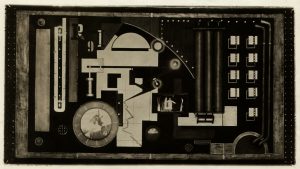
Friedrich Kiesler. stage design for Karel Čapek, Rossum’s Universal Robots, R.U.R., Berlin 1923. Collage. © 2017 Austrian Frederick and Lillian Kiesler Private Foundation, Vienna.
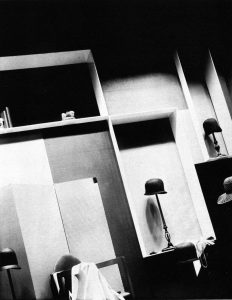
Frederick Kiesler. Saks Fifth Avenue junior apparel display, New York, 1929. From Frederick Kiesler,Contemporary Art Applied to the Store and its Display, 1930. Courtesy of the Austrian Frederick and Lillian Kiesler Private Foundation, Vienna.
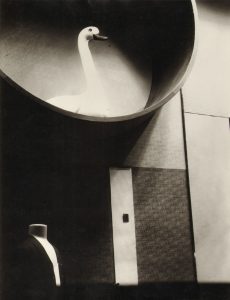
Frederick Kiesler, Saks Fifth Avenue children’s window display, New York, 1929. From Frederick Kiesler,Contemporary Art Applied to the Store and its Display, 1930. Courtesy of the Austrian Frederick and Lillian Kiesler Private Foundation, Vienna.
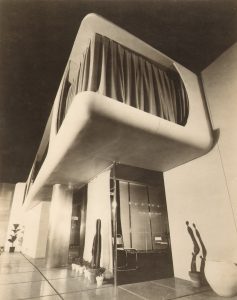
Frederick Kiesler. Space House, 1933, photograph of prototype by F.S. Lincoln. Courtesy of the Austrian Frederick and Lillian Kiesler Archive, Vienna.
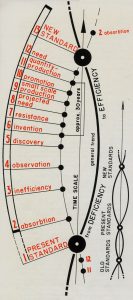
Frederick Kiesler, biotechnical motion study. Collaged drawing, 1938. © 2017 Austrian Frederick and Lillian Kiesler Private Foundation, Vienna.
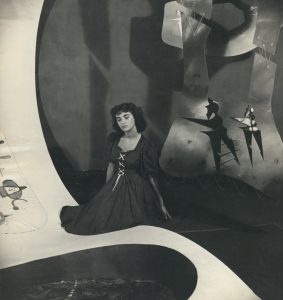
Frederick Kiesler, Halls of Superstitions, 1947. Photograph by Willy Maywald of woman posing near Max Ernst’sBlack Lake, 1947. Courtesy of the Austrian Frederick and Lillian Kiesler Private Foundation, Vienna. © 2017 Association Willy Maywald / Artists Rights Society (ARS), New York / ADAGP, Paris.
Even if these questions go unanswered in this book, one cannot help but recognize that a certain service has been done. Phillips has culled through mountains of archival material, traced the peripatetic movements of his elusive subject, and veritably reconstructed the most ephemeral and contingent of design objects. This bewilderingly complex set of things and ideas somehow falls neatly into place (though not in a reductive sense) to produce a narrative that is both internally cohesive, but which also reaches out to interface with myriad other histories of modern design. In this way, the book not only functions as a history of a particular architectural practice, but also contributes to an expanded genealogy of technologically and aesthetically mediated human–environment interaction.
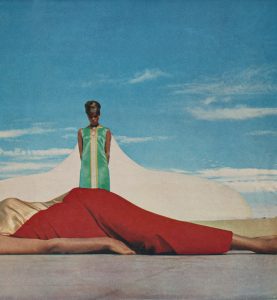
Frederick Kiesler and Armand Bartos. Shrine of the Book, c. 1965. Page from French Magazine, found on Frederick Kiesler’s desk. Unidentified creator. Held in 1959 Desk Notes, Clippings, Miscellaneous, Lillian and
Larry D. Busbea is associate professor of art history at the University of Arizona, Tucson where his research focuses on the interactions of design, art, and critical theory in Europe and the United States after WWII. His critical essays and reviews have appeared in October, The RIBA Journal of Architecture, Design Issues, The Journal of Design History, www.we-aggregate.org, The Architect’s Newspaper, and the Journal of the Society of Architectural Historians. His book Topologies: The Urban Utopia in France, 1960–1970, was published by MIT Press in 2007. His current book project, The Responsive Environment: Aesthetics, Design, and Interaction in the 1970s, was awarded a research grant from the Graham Foundation for Advanced Studies in the Fine Arts.
How to Cite this Article: Busbea, Larry. Review of Elastic Architecture: Frederick Kiesler and Design Research in the First Age of Robotics, by Stephen J. Phillips. JAE Online. November 5, 2018. http://www.jaeonline.org/articles/reviews-books/elastic-architecture#/.






